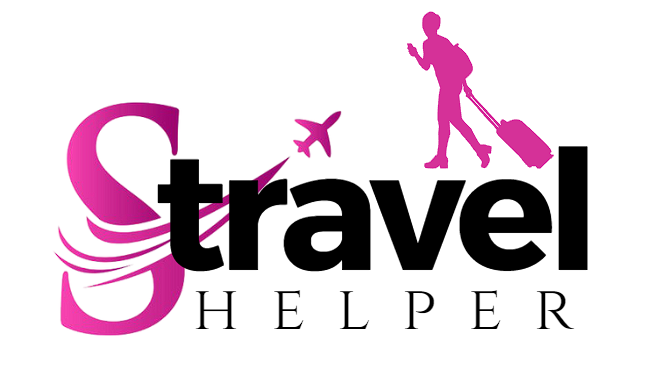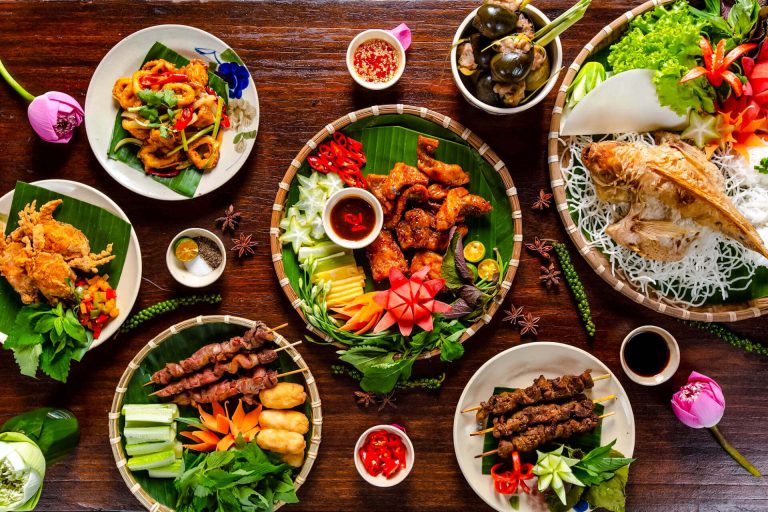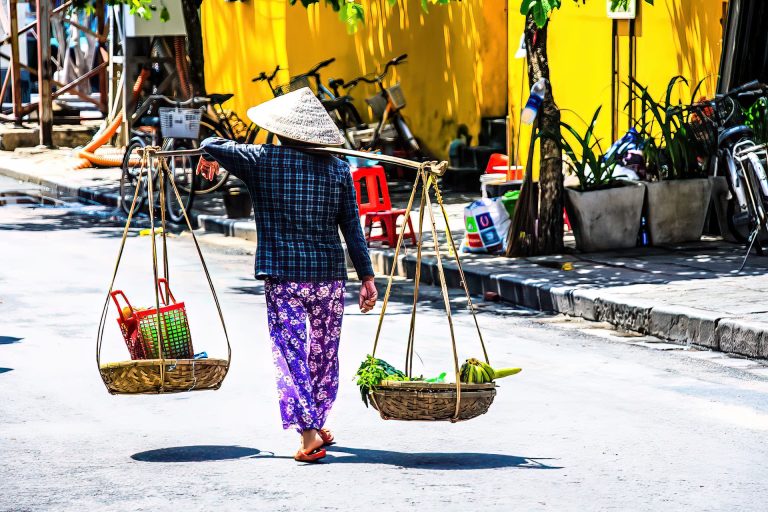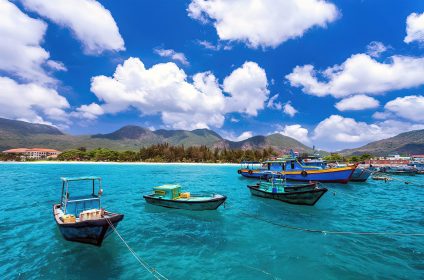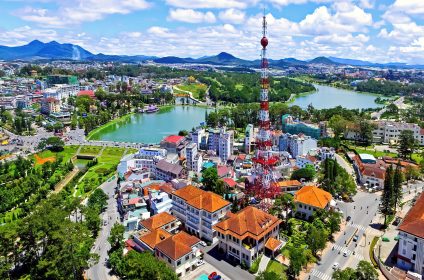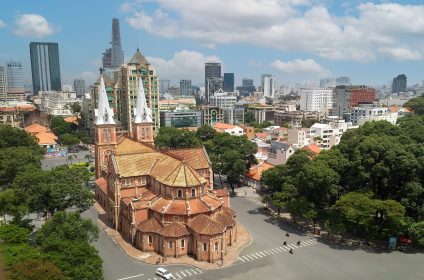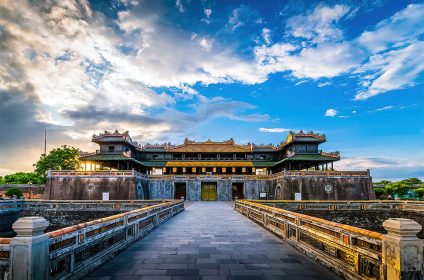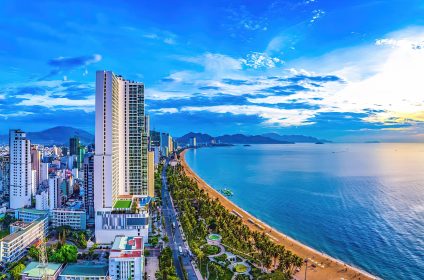
Entry Requirements For Vietnam
Visa & Passport For Vietnam
Visitors from the following countries do not need a visa and can stay for the following number of days.
- 14 days: Brunei, Myanmar
- 15 days: Belarus, Denmark, Finland, France, Germany, Great Britain, Italy, Japan, Norway, South Korea, Spain, Sweden, Russia (from 1 July 2015)
- 21 days: Philippines
- 30 days: Indonesia, Laos, Malaysia, Singapore, Thailand, Cambodia
For travel to Vietnam, all other nationalities require a visa in advance.
The Vietnamese government eliminated visa requirements for Phu Quoc Island in order to increase tourism. You do not need to apply for a visa in advance if you are flying there via Ho Chi Minh City or traveling by boat. Regardless of your nationality, this holds true. On the island, visitors may stay for 15 days. People who want to travel abroad can apply for a legitimate Vietnamese visa at the neighborhood immigration office. Upon arriving in Phu Quoc, all passports must be valid for at least 45 days.
The majority of Vietnamese embassies and consulates accept online applications for visas. Depending on your nationality and the embassy or consulate where you apply, obtaining a visa will cost money. Consult the local Vietnamese embassy or consulate for more information. Applying at the Vietnamese embassy in Bangkok is a popular choice if your nation does not have a Vietnamese embassy or consulate.
While you wait services at several Vietnamese embassies allow you to apply for a single-entry visa in under 15 minutes (May 2008). Although this service costs USD 92, approval happens right away. A current passport, a photo ID, and money are required (credit cards are not accepted).
Because the relatively high cost of visas is a source of humiliation, income, and a deterrent to tourists, embassies are hesitant to disclose a fee structure (EU and US). Although visa exemption for neighboring countries is part of Vietnam’s commitment to exempting its ASEAN (Association of Southeast Asian Nations) citizens from visa requirements, the elimination of visa fees for some nationalities (but not for former Vietnamese) has partially offset the decline in the number of Western tourists.
For as long as their passport is valid, foreigners of Vietnamese descent can apply for a visa waiver, which permits multiple entry for periods of three months at a time.
A visa on arrival is becoming a more and more popular substitute because it is not only significantly less expensive but also eliminates the requirement to ship passports to the Vietnamese embassy in the place of origin.
Visa fees for Vietnam
A 30-day single-entry visa cost 100 CAD in April 2014 when it was issued by the Vietnamese Consulate General in Vancouver, Canada. The identical visa was available at the Vietnamese Consulate in Turin, Italy, for roughly 115 euros (including postage). In September 2014, the visa cost $95 at the Socialist Republic of Vietnam Consulate General in Sydney, Australia.
Visa on arrival in Vietnam
In the case of Vietnam, the phrase “Visa on Arrival” (VOA) is a little deceptive because a letter of approval must be received before to departure. For fees ranging from USD 14 to 21 (2016), depending on the agency and the number of applicants, this form of visa is processed by an increasing number of online businesses. Most organizations take credit cards, but a few also accept donations through Western Union.
Within three working days, the official in Vietnam obtains an acceptance letter from the immigration office with the visitor’s name, date of birth, date of arrival, nationality, and passport number, and sends it to the visitor by email or fax (in PDF or JPEG format). It is typical to receive the letter along with further details on the applicant’s passport (passport number, date of birth, name, etc.). On the same letter, you may disclose your personal information to between 10 and 30 more candidates (s). It is advised to first see if the agencies provide the option to obtain a separate or private permission letter (private visa on arrival) on their website for individuals who are concerned about privacy or security. Very few internet businesses offer this choice. To keep your personal information private, another option is to apply for a normal visa through the embassies.
The visitor goes to the “Visa on Arrival” counter at one of the international airports (Hanoi, Ho Chi Minh City, Da Nang, Nha Trang, Vinh or Phu Quoc), presents the letter, completes an additional arrival form (which can be completed in advance of departure), pays the stamp fee, and receives an official stamp (sticker) in his passport. The stamp cost is $25 (or $50 for a visa with multiple entries) (2016). Tickets must be in brand-new condition in order to be accepted; all other currencies and credit cards will not be accepted. Furthermore, a passport photo is needed. While only one photo is typically necessary, certain agencies specify that two are.
Please be aware that Visas on Arrival are not valid for border crossings and that only the three international airports offer the official stamp. Therefore, travelers arriving at the border by land from Cambodia, Laos, or China must have a complete visa.
Most, if not all, airlines that fly to Vietnam need their passengers to submit the approval letter at check-in; otherwise, their request would be denied.
In Vietnam, arrival/departure cards are not used.
You might be required to undergo a “health check” depending on the state of SARS and avian flu.
Instead of a check, there is a new form to complete and, of course, a new charge. If you can find some dong, it just costs 2,000 dong per person, but if you only have dollars, they want 2 USD for the same “service”!
E-visa
At the Vietnam Immigration Department, visitors who are nationals of the following 40 nations may apply for an electronic visa. The e-visa is valid for just one entry, a 30-day maximum stay, and the most frequent entry and exit locations, which must be selected on the application ahead of time (although it is unclear if this is enforced). The following countries are included in this list: Argentina, Armenia, Australia, Azerbaijan, Belarus, Bulgaria, Brunei, Canada, Chile, China (including Hong Kong and Macau, but excluding holders of e-passports), Colombia, Cuba, Czech Republic, Denmark, East Timor, Finland, France, Germany, Greece, Hungary, India, Ireland, Italy, Japan, Kazakhstan, Luxembourg, Myanmar, Mongolia, New Zealand, Netherlands, Norway, Panama, Peru, Philippines, Poland, Romania, Russia, Slovakia.
An e-visa costs roughly 27 USD (25 USD in VND equivalent + about 2 USD service charge for credit card processing). It takes 1-3 (Vietnamese) business days to produce. You don’t need to wait in line at the visa booth after arriving, nor is there a stamping fee payable at the airport. Go straight to immigration, showing your printed e-visa paper to the passport check officer. Your passport will be stamped with the earliest permitted departure date.
The e-visa is by far the least expensive, fastest, and safest choice if your travel plans comply with its requirements (as the whole process is government owned). You will need to leave the country and then come back because the e-visa cannot be extended. Please do not mix the e-visa with the wrongly frequently referred-to visa on arrival.
Vietnam admission requirements: Passports must contain at least 2 blank pages and be valid for at least 1 month after the date of arrival in order to receive entry stamps from Vietnam. For people who intend to leave Vietnam before the 30-day validity period expires and subsequently reenter the country, a new application for an e-visa is necessary. The eVisa only permits a single entry to the nation.
Beware of airport extortion by Vietnamese immigration agents. Visitors coming with a tourist visa that they have already paid for and received approval for from the government’s website can still be compelled to pay an extra charge of between USD 100 and 200 for “corrections” to their visa. Visitors who refuse to pay are held in a guarded, closed area without internet until they can book a flight on the same airline they used to travel to Vietnam back to their home country. This may take days to complete, is expensive, and can be very painful.
How to Apply for Vietnam’s e-Visa
Step 1: Prepare the required materials:
- One 4×6 passport photo in .jpg format with a white background, without glasses.
- One photo in .jpg format of your passport data page.
- Passport valid for at least six months.
- Your temporary address in Vietnam and points of entry and exit.
- Debit or credit card for payment.
Step 2: Click https://immigration.gov.vn/ and go to ‘E-visa Issuance’ then click on the link for ‘Outside Vietnam foreigners’.
Step 3: Upload your .jpg images (passport data page and passport photo) and fill out the required fields on the form completely. Submit your form.
Step 4: Pay the e-Visa fee of 25 USD. Copy down the document code provided.
Step 5: Within three working days you should receive news of your e-Visa application via email.
Step 6: Use your document code to locate your e-Visa online. Download and print the e-Visa in two copies for extra safety.

